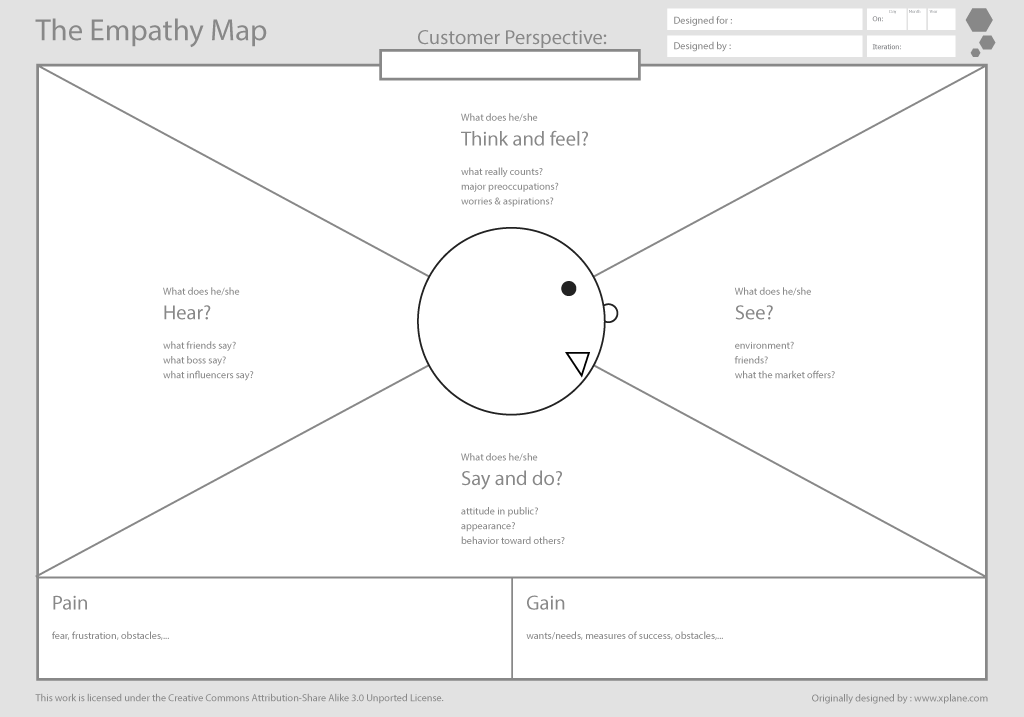Empathy Map's Creator
Dave Gray
Dave Gray is the founder and chairman of XPLANE and also co-founder of Vizthink, a global community dedicated to the use of visualization. As artist, journalist and information designer, he is passionate about applied creativity...
Learn More
Description of the Empathy Map
A User Empathy Map is used to help in the discussion about the needs a user has. Using it allows you to focus on what was observed, and what can be inferred about your different user groups’ beliefs and emotions.
Developing a better understanding of the person for whom you are designing your product with the Empathy Map helps you synthesize observations and draw out unexpected insights.

